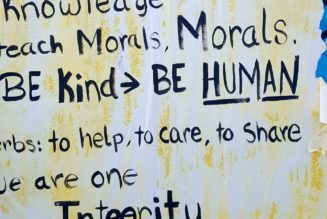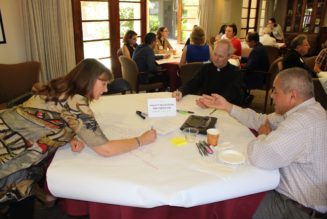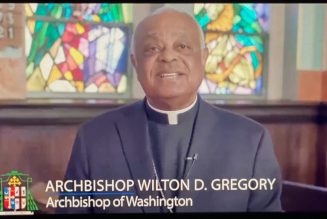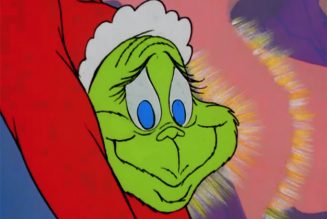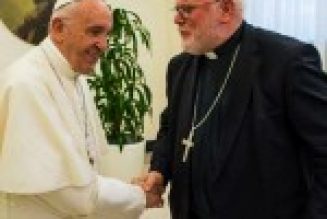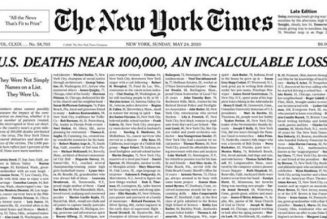, October 29, 2020
Without All Saints Day, Halloween would never end. The Solemnity of All Saints readings describe an explosion of grace that is still reverberating and lighting up a dark, twisted world.
A Saturday Halloween night is the perfect metaphor for a world without Christ: Rootless pleasure seekers dressed to reflect their fantasies and fears stumble through a dark, cold, decaying autumn world. And then the All Saints Day Sunday dawn breaks and we gather in Church to learn who we really are and where true happiness lies.
Without All Saints Day, we would each be the last desperate gasp in a long chain of sinners and seekers.
The often-cited “Ancestral Mathematics” goes like this. In order to be born, you needed: 2 parents, 4 grandparents, 8 great-grandparents, 16 second great-grandparents, 32 third great-grandparents, 64 fourth great-grandparents, 128 fifth great-grandparents, 256 sixth great-grandparents, 512 seventh great-grandparents, 1,024 eighth great-grandparents, and 2,048 ninth great-grandparents.
That makes us each a product of 4,094 ancestors over just the last 400 years — it grows exponentially as you add more centuries before that. Those ancestors had to meet, pair off and reproduce in just the right order. Materially speaking, it can seem random that we exist at all, and it takes the force of our will to create our own identity in that sea of ancestors whose genes formed us.
But instead of that long line, there is also a circle that explains each of us, only none of us is in the center of that circle. We are at the outer rim. Imagine it as a continuation of one of Notre Dame Cathedral’s rose windows, with Christ in the center, and apostles and saints emanating out from him.
Think of them as showing an enormous explosion of grace. God himself entered time and space and transformed it fundamentally, like a second “Big Bang,” his grace reverberating out in flashes of his brilliance, lighting up the darkness even light years away.
The Gospel on Sunday explains what that explosion of grace looks like.
Jesus Christ sits on a mountain like a new Moses and begins to teach the people, clearly showing himself to be God, quoting what the Torah says, then adding, “But I say …”
He is God with us, giving us a new model of behavior, and a new principle of being. We are no longer going to be hunting in the darkness for pleasure, each of us choosing our own identity. We are going to reflect him, shining his light in the world.
The Beatitudes from the Sermon on the Mount are the ultimate imitation of Christ, each “Blessed are they who …” describing what it means to be like Christ, and each “… for they shall be …” showing the results of being drawn into Christ’s life. So I think of them this way:
- The poor in spirit are like Jesus — they do not give their hearts to the world, but to heaven instead.
- Those who mourn are like Jesus — they do not look for comfort from humanity, so they find it in God.
- The meek are like Jesus — they do not put their hopes in themselves, but in the one who creates and directs the earth.
- Those who hunger and thirst for righteousness are like Jesus — their desire for justice cannot be bought off by anything but the real thing.
- The merciful are like Jesus — they say “Forgive them for they know not what they do” and the Father welcomes them as his own.
- The pure in heart are like Jesus — they see and serve the image of God in every human person.
- The peacemakers are like Jesus — they reconcile the Father with all of his children.
In the last Beatitude, Jesus gets more personal. He says not only “Blessed are they,” but “blessed are you.” So it is like this:
- When you are persecuted you are like Jesus — only by running the gauntlet of the way of the cross with him will you enter heaven with him.
That makes “Christian mathematics” look totally different from our “Ancestral Mathematics.”
The thing that all the Beatitudes have in common is that they take us out of the center of our life and put Christ there. Instead of the long chain of ancestors that determined our flesh, we can look at the concentric circles of saints that shape our whole lives, like rays configuring everything to Christ.
First we had Jesus, then we had his apostles and disciples, then we had the bishops and priests they ordained and the lay people they inspired, then they passed the faith on to their children and their neighbors.
From Christ the King came the shock waves of age after age of saints who through conquering themselves and insisting on God’s will, became the body of Christ and changed history. The incarnation knocks us out of the center of our own lives into the peripheries of his.
You can see what the waves of the explosion looks like in heaven in Sunday’s first reading.
In the Book of Revelation, John sees an angel holding the “seal of the living God.” That “living God” is the New Testament way of distinguishing our God from the pagan gods, who are often nothing more than the personification of natural forces. These are Halloween gods, inanimate things that masquerade as something they are not.
Jesus has said “the gate is narrow and the way is hard, that leads to life, and those who find it are few,” but the first reading doesn’t make heaven seem like a rare attainment.
“I had a vision of a great multitude, which no one could count, from every nation, race, people, and tongue,” says John. “They cried out in a loud voice: ‘Salvation comes from our God, who is seated on the throne, and from the Lamb.’”
They express the Beatitudes in miniature, ascribing “Blessing and glory, wisdom and thanksgiving, honor, power, and might” to God, not themselves.
They have not achieved their own place of glory. They washed their robes in the blood of the lamb — not their own. Sanctity is Christ’s work, not theirs.
So the darkness of Halloween has been dispelled by Christ’s light in the saints. Where does that leave me?
All Saints Day is first a day to celebrate the great achievement of our spiritual ancestors. But Christ’s project will only continue if we do what they did.
This is the sense of the Second Reading, where John celebrates not the sanctity of the past, but the sanctity of each of us. “See what love the Father has bestowed on us that we may be called the children of God. Yet so we are,” he says.
We still have a long way to go, though. “What we shall be has not yet been revealed.” Only those who reproduce the life of Christ here and now will be part of it there.
Tags: All Saints Day, prayer, Sunday Gospel, Sunday Readings
Never miss a post! Subscribe below to our weekly newsletter.
Related
Join Our Telegram Group : Salvation & Prosperity


